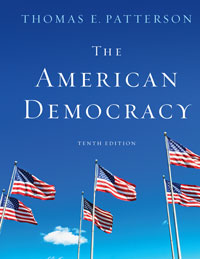 
The American Democracy, 10th Edition (Patterson)Chapter 5:
Equal Rights: Struggling Toward FairnessChapter Overview
The focus of this chapter is on civil rights and equality. All individuals have the right of equal protection of the laws and equal access to society’s opportunities and public facilities. The chapter examines the major laws relating to equality, and the conditions that led to their adoption. It concludes with a brief look at some of the continuing challenges facing America's historically disadvantaged groups. The chapter emphasizes these points:
- Americans have attained substantial equality under the law. They have, in legal terms, equal protection under the laws, equal access to accommodations and housing, and an equal right to vote. Discrimination by law against persons because of race, sex, religion, or ethnicity has been virtually eliminated
- Legal equality for all Americans has not resulted in de facto equality. African Americans, women, Hispanic Americans, and other traditionally disadvantaged groups have a disproportionately small share of America’s opportunities and benefits. Existing inequalities, discrimination, and political pressures still are major barriers to their full equality. Affirmative action is a policy designed to help the disadvantaged achieve a fuller degree of equality.
- Disadvantaged groups have had to struggle for equal rights. African Americans, women, Native Americans, Hispanic Americans, Asian Americans, and others have all had to fight for their rights in order to come closer to equality with white males.
 |  |
|

















